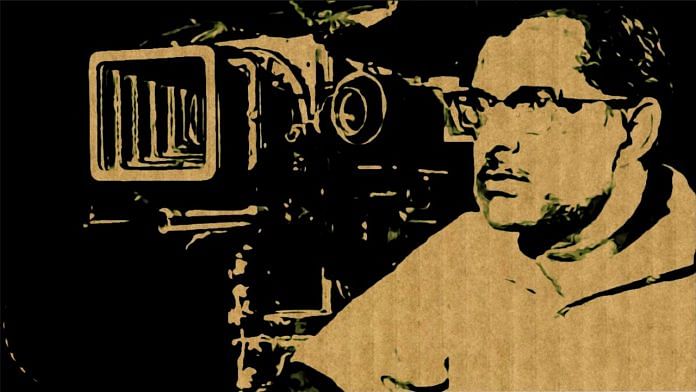New Delhi: Born on 30 September, 1922 in Kolkata, filmmaker Hrishikesh Mukherjee studied science and chemistry, and even taught mathematics, before turning to camera work, film editing and eventually directing movies.
It was in 1951, when he had moved to Mumbai and began assisting director Bimal Roy, that his career in the movies really took off. Roy mentored Mukherjee and continued doing so even when the latter began making films of his own.
“I was a member of his [Roy’s] family,” revealed Mukherjee, in an interview.
He went on to direct 42 films in over four decades, head the Central Board of Film Certification (CBFC) for about a year and received the Padma Vibhushan in 2001 for his contributions to Indian cinema, along with multiple Filmfare and National awards, including the Dadasaheb Phalke in 1999.
On his 13th death anniversary, ThePrint remembers this genius who redefined Hindi cinema with films such as Anand, Chupke Chupke, Gol Maal and many more.
Small stories with big heart
In his films, Mukherjee often portrayed the common people – their trials and tribulations – in a detailed and realistic fashion. Simple characters with complex “moral dilemmas” was more his cup of tea, explains Bhawana Somaaya in her book Fragmented Frames: Reflections of a Critic (2008).
Hrishi da, as he was popularly known in the industry, rarely depicted glamour. Just like his contemporaries Shyam Benegal and Basu Chatterjee, Mukherjee was more invested in stories about ordinary people. But he portrayed them with a light, comic touch.
The “Hrishi da touch”, as explained by author Rammesh in Human Cinema: The Films of Hrishikesh Mukherjee, was “a sincere and penetrating look at the travails of humans… without chest thumping lessons, a lyrical pace to the story combined with high-quality music and the inevitable humour”.
In Chupke Chupke, a 1975 classic that follows a professor’s comic attempts to one-up his brother-in-law, Mukherjee uses language to comment on the hierarchy of class.
A message which the film sends out, writes Business Standard, is to underscore that it is futile to aspire for purity – be it for definitive lines of class or shudh languages such as Hindi or Urdu.
In Gol Maal (1979), he addressed unemployment, a burning issue among India’s middle class at the time. Mukherjee also depicted the realities of suffering from terminal diseases in Anand (1970) without resorting to “the obvious emotional drama”.
Though many of his movies featured some memorable songs – think Abhimaan (1973), Namak Haraam (1973) and Anand – he was not a fan of big Bollywood chart busters. He once said in an interview that of all the songs in his films, barely two or three were “necessary”.
He also maintained that using “forced” songs in a film is not always a bad decision if it entertains the audience.
On the set, he was known to economise on production and restrict scenes to a maximum of one or two takes. “Mukherjee always kept a finger on the audience’s pulse and on the producer’s money,” writes Rammesh.
Cheerleader for young filmmakers
Director and film professor at Krea University K. Hariharan tells ThePrint that Mukherjee had a vision for Indian cinema and persuaded the government to support new films.
“Since then, no one has chaired the Board like him. It’s just another distribution house now,” says Hariharan.
As a young filmmaker, Hariharan had interacted with Mukherjee a number of times and remembers him as a “generous” and “caring” man.
“He would lend me his Arriflex camera and Nagra recorder when we were low on funds. It was a big help for someone starting out in films because it meant access to the best equipment free of cost,” he said.
Towards the end of his career, Mukherjee faced a few roadblocks.
Peering through square-rimmed glasses and speaking with a slight underbite, he admitted to feeling lonely, in a 1999 interview, after the deaths of his “right-hand” cameraman, sound recordist and art director.
The physical toll of managing a set by himself had also caught up with him.“My body doesn’t cooperate with my mind [anymore]… 77 is no joke,” said Mukherjee, who passed away on 27 August, 2006.
Today, in an era of cinema that is driven by spectacle and effects, Mukherjee and his films, including Bawarchi (1972), Mili (1975), Khubsoorat (1980) and Guddi (1971), are those we go back to for comfort.
Also read: Lalita Pawar, Hindi cinema’s favourite vamp, played a memorable positive role in Anand




One of the finest Director, who brings everything in simple style. Worked with all the stalwarts of Hindi cinema.